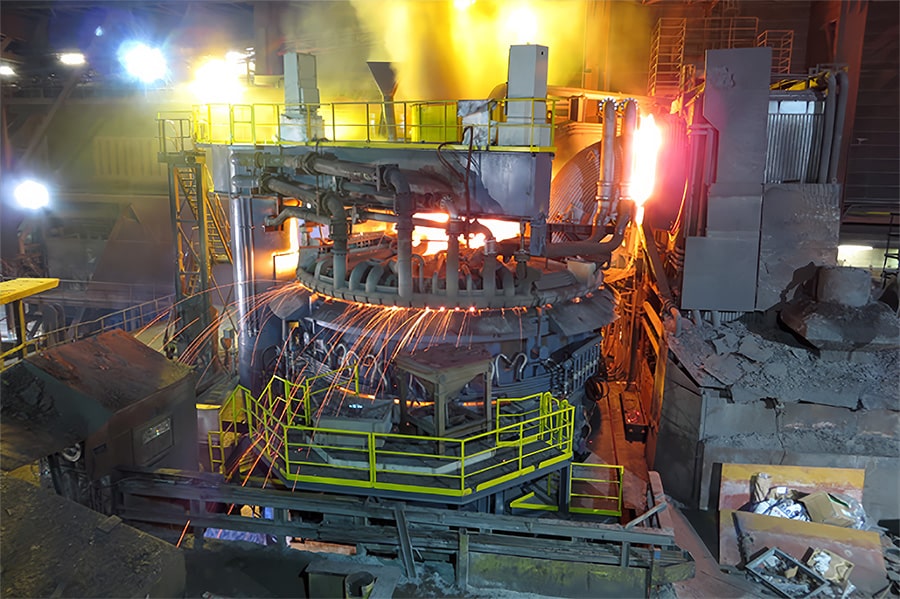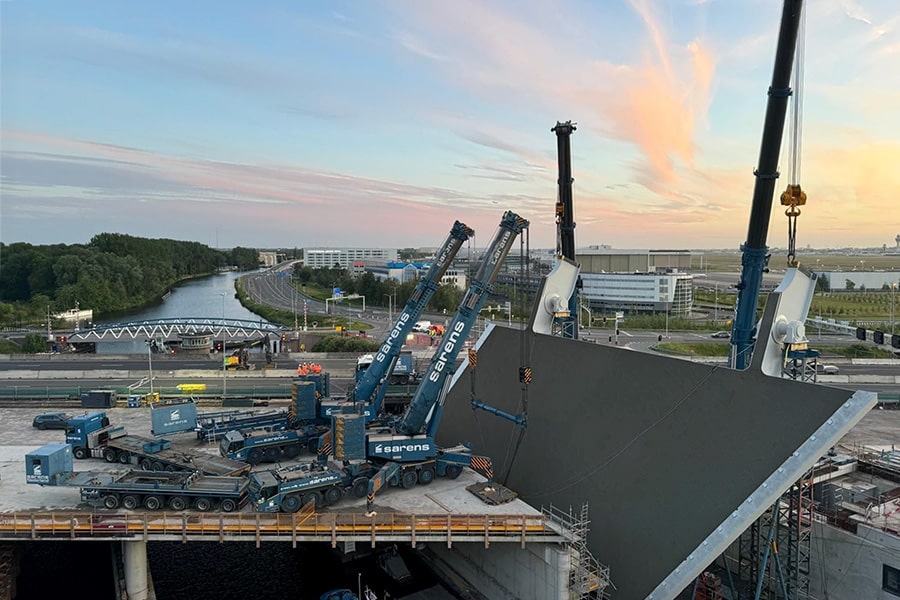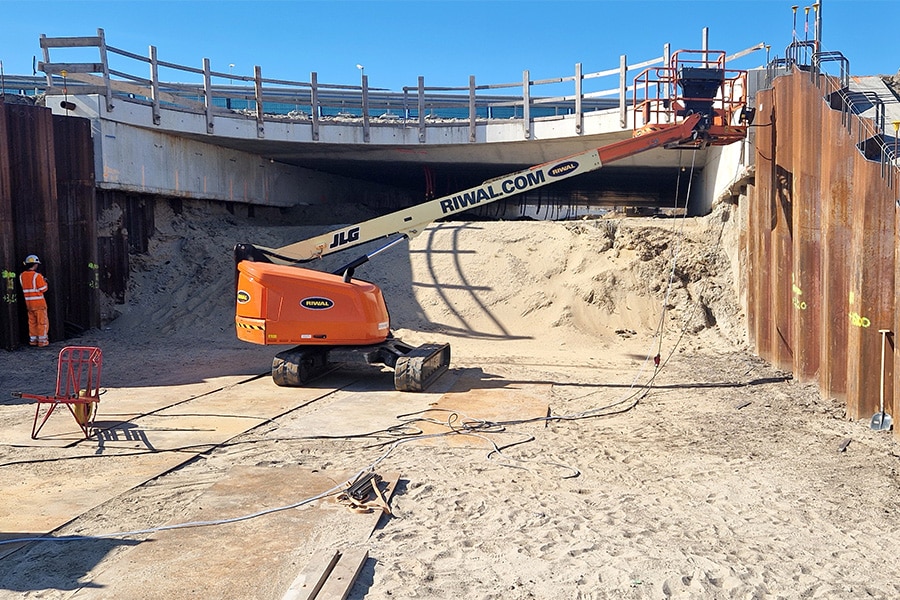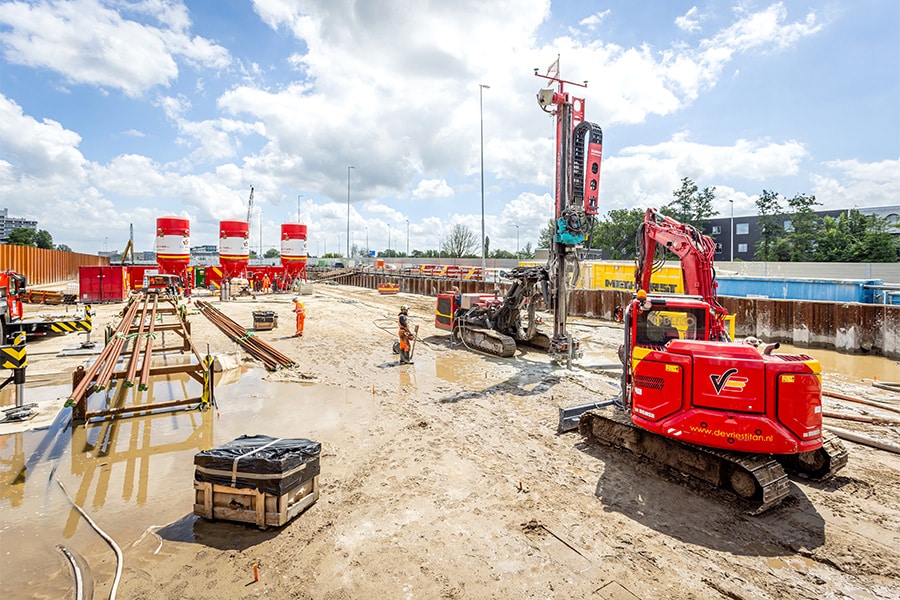
Sustainable projects with sheet piles made from scrap metal
Making Dutch construction more sustainable is essential. In many projects, the environmental impact of the chosen solution and construction must be determined. This is done using Life Cycle Assessments (LCA) and Environmental Product Declarations (EPD). Both documents show emissions, including CO2 emissions released during the production of specific products. These emissions are converted to an Environmental Cost Indicator (EQI) in order to properly compare and assess them.
ArcelorMittal's hot rolled steel sheet piles from Luxembourg are the sustainable solution for foundations. EPDs for all AZ, AU and PU sections are available specifically for the Dutch market. Because these sheet piles are produced from approximately 100% scrap in an electric arc furnace, this gives a much lower environmental impact compared to sheet piles produced from iron ore in a blast furnace.
Reducing CO2 emissions is an important element in any project, but there are more categories that are considered in an LCA, including, for example, depletion of (fossil) resources, eutrophication and acidification of the environment. In addition, the Netherlands has specifically chosen to include four additional toxicological values in the environmental impact of a product. By adding up the different phases for each emission, the total environmental impact of the sheet pile during the project can be determined. However, it is difficult to compare different types of emissions with each other.
compare. In the Netherlands, therefore, the choice was made to apply a conversion factor for each emission, so that everything is expressed in euro MKI.

Sustainable and efficient steel production
All of ArcelorMittal's AZ, PU and AU dam wall sections are produced in Luxembourg from scrap in an electric arc furnace, no more iron ore is involved. This eliminates the extraction of primary raw materials from nature and is the sustainable way of steel production. Also, less waste materials are released compared to the blast furnace process, with CO2 eq. emissions being about a factor of 5 lower.
When looking at the Global Warming Potential (GWP - CO2 equivalent) and the Environmental Cost Indicator (EQI) of the generic sheet piles in the National Environmental Database, it is noticeable that there is a huge gain to be made with ArcelorMittal sheet piles compared to the reference values. A sheet pile produced from blast furnace steel has a GWP of 2,120 kg CO2-eq/ton, contributing to a total MKI of €275 per ton for the production phase. For the same dam wall type produced in Luxembourg, a GWP of 359 kg CO2-eq/ton is possible, contributing to the total MKI of €44.30 per ton for the production phase. The relatively short transport distance (possibly by axle or barge, including HVO100) from the Luxembourg plant to the Netherlands further contributes to the sustainable solution. The choice of ArcelorMittal as supplier can reduce the CO2 emissions and EQI value by 77% for the production phase (A1-A5). Electrically installing the sheet piles on site can further reduce CO2 emissions by +/-100 kg CO2-eq/ton, reducing emissions and MKI by another 5%.
The total lifetime MKI depends on the degree of recycling, reuse and end-of-life landfill. These must be made project-specific, as it depends on the application, environmental conditions and project life. For example, for a temporary sheet pile structure, the percentage of reuse can be as high as 100%, further reducing the environmental impact over the life cycle.
Reduce - Reuse - Recycle
A reduction in environmental impact is not only achievable in the production process. Another environmental gain can be achieved in reducing the number of pounds of steel that go into the ground. Due to innovations to the sheet pile sections and steel grade, today's sheet piles are on average 30% lighter than 30 years ago. The 800 mm wide AZ sheet pile series has a unique strength-to-weight ratio. Any savings in material use results in a more economical design, as well as huge savings in sustainability and CO2 emissions.
Steel sheet piles are also excellent for temporary reuse, such as in temporary construction pits. It is important to consider the reusability of the sheet piling in the design. The sheet pile in a fully optimized design may be less suitable for reuse than a type of heavier sheet pile. If the 15% heavier sheet pile can be reused up to eight times more often within one or more works than the lighter variant, this is a huge optimization in cost and sustainability. We therefore facilitate this process by offering sheet piles in rental and buy-back contracts. However, used sheet piles are not often allowed in a final work, although they can often perform the function just as well as a new sheet pile. The big difference is that not all the emissions from the production phase have to be included for the used sheet pile, it has already been partially included in the previous temporary applications.
Due to damage after frequent reuse and/or deterioration by corrosion, sheet piles will eventually fail to meet the specified requirements for (re)use. Even steel sheet piles removed from the subsoil after 100 years will no longer meet these requirements. All sheet piles that are no longer reused will be fully recycled, serving again as raw material for the electric arc furnace. The circle from scrap - to steel sheet piling - to scrap is now complete and will be repeated for the next project.
Heeft u vragen over dit artikel, project of product?
Neem dan rechtstreeks contact op met ArcelorMittal Projects Europe B.V..
 Contact opnemen
Contact opnemen



